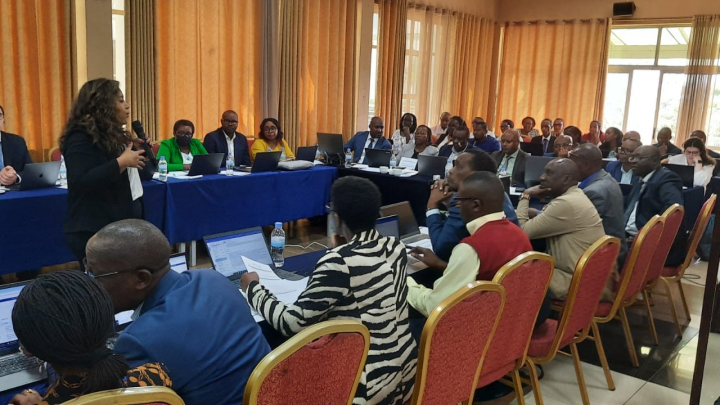Mechanism engages in a discussion of judicial working methods organized by the Rwandan judiciary

On 20 June 2024, the judiciary of the Republic of Rwanda (Rwanda) organized a collaborative, day long exchange with the International Residual Mechanism for Criminal Tribunals (Mechanism). Hosted in Kigali, this dialogue was the result of the initiative of the Rwandan judiciary, which identified the most salient topics and arranged for around 30 of its Judges and judicial personnel to participate in the exchange alongside experienced judicial staff of the Mechanism. The event was formally opened by the President of the Mechanism, Judge Graciela Gatti Santana, along with the President of the Court of Appeal of Rwanda, Hon. Justice François Régis Rukundakuvuga. In speaking to the assembled participants, they expressed appreciation for the collaboration and the opportunity for their respective institutions to cooperate more closely in sharing experience and knowledge with one another.
Following these opening remarks, Mr. Matthew Carlson, Senior Legal Officer and Co-Chief of the Chambers Legal Support Section of the Mechanism, and Ms. Michaella Andrianasolo, Legal Officer in the Chambers Legal Support Section, initiated a discussion concerning the Mechanism's judicial working methods. They next addressed the means through which the Mechanism makes its jurisprudence and judicial records available to the public, including through its case law database and unified court records database, as well as the processes through which national jurisdictions can request access to confidential evidence. After turning to the management of unforeseen incidents in judicial proceedings, they concluded the event by focusing on the evaluation of evidence in atrocity crime cases.
The Mechanism engaged in this exchange in line with its mandate to provide assistance to national jurisdictions at their request, and further to its goal of ensuring that the legacy it safeguards is readily available to members of the communities most affected by its work.